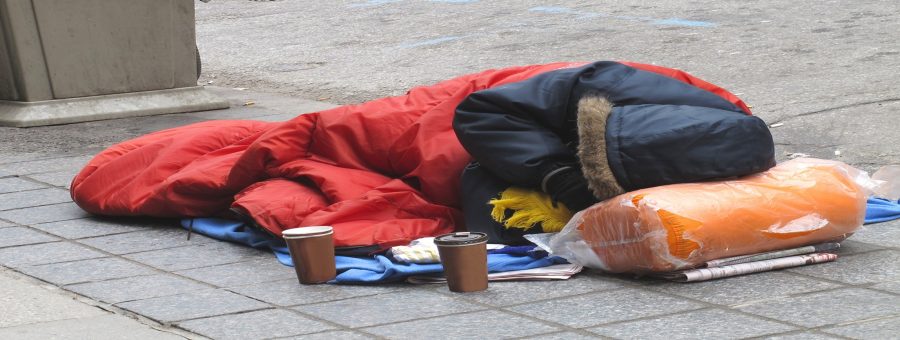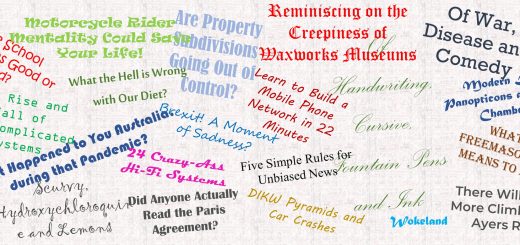Of Homelessness and Charity

Shôn Ellerton, June 10, 2020
So frequently commonplace in today’s cities, it is often so easy to ignore the trials and tribulations of the homeless.
While the world seems predestined to throw itself into perpetual chaos with pandemics and civil unrest being flavour of the month, life is still hard for the homeless.
Rain or cold, they make do with a modicum of essentials comprising a blanket and a little bag of clothes. They often rely on the goodwill of those passing by to drop a coin or two, or perhaps, be offered something to eat and drink. Affluent impeccably dressed businessmen nonchalantly straying past the homeless seemingly forgotten by society with averted eyes is an all-too-common occurrence.
With those living on the street, I always think of Steely Dan’s catchy Show Biz Kids class-conscious track of the rich and famous rubbing shoulders with the poor on the street.
‘While the poor people sleepin’
With the shade on the light
While the poor people sleepin’
All the stars come out at night’
Many of us, including myself, do not feel especially comfortable walking past that homeless man or woman. I often encounter the same homeless individuals on my walk back from work to the railway station in Adelaide. I feel uncomfortable because I genuinely have the feeling of being in a privileged situation. After all, I have friends and family, have a house to live in, and have a job. And there I am, walking by trying to avoid eye contact or feign an action of doing something else, for example, checking a message on my phone so as to indicate to the beggar that I didn’t see him (or her) there. But I know deep down that they do know and that makes it more uncomfortable. I then think to myself. Well, maybe I should have given something. Maybe I’ll walk back and give something but the tactic seems bizarrely remiss with the moment gone and I abandon it on the basis that I’ll do better the next day.
During mid-2019, I started to commute to work by train to the centre of Adelaide and then having to walk the remaining distance to work. Prior to that, because of the work locality, I drove every day, and hence, I did not encounter the homeless frequently. A week in the daily commute, I stumbled on a homeless guy called Mike who sleeps next to the Pilgrim Uniting Church just off Flinders Street. I gave him a few bucks and asked him how he was, although, clearly, anyone being left homeless on the street, the answer is probably not very well, so why I asked the question is possibly moot. But I did anyway. He smiled happily and said a few kind words to me. I walked on and looked behind spotting a young woman handing over a few oranges she had in her bag over to Mike.
Towards the end of the year, I changed jobs and took a different route to work, in which I encountered a homeless man by the name of Lindsay. He normally resides under the cover of Topham Mall, an open-sided mall offering little in the way of protection from the elements blowing in through the short passageway. Lindsay’s appearance is of a scrawny nature and he wears round glasses along with a pointy woollen hat. Having passed Lindsay on a regular basis, I asked him what he does, or did, and how he copes with the elements. Although Adelaide does not suffer extreme cold unlike some cities around the world, it certainly gets chilly enough at night to be quite uncomfortable. Lindsay used to be in the theatre business but somehow or another managed to find himself high and dry. Unlike Mike, he goes to a shelter not far down the road at night to sleep which is largely managed by volunteers. He is very well-spoken and could engage in a variety of very interesting conversations, many of which, I would struggle to engage with many of my friends and colleagues. I noticed that many others do the same when I walk along the same route back to the railway station. And, not far from where Lindsay normally sits, is a man who lives under the eaves of a building next to a coffee shop on the south side of Topham Mall. I often see him writing or drawing in his large notepad but other than that, I haven’t spoken to him yet.
Homelessness is a terrible problem and it is endemic worldwide. Affluent ‘first-world’ cities like Los Angeles and New York City have an alarming number of homeless people making part of the top five of the most homeless cities in the world along with Moscow, Manilla and Mumbai (according to Esri) and, yet, there seems to be no solution to the problem. It is so commonplace that it is seldom reported in the headlines.
Homelessness makes no distinction between race, gender or religion, although some may argue that point. What is undeniably true is that many of the homeless are suffering from mental illness and struggle day to day in order to survive. The ‘crazies’ that everyone wants to avoid on the street are not compos mentis and walk the streets aimlessly. Some of the homeless in the street look dazed and confused reeking of cheap alcohol; alcoholism and drug dependency being a scourge. However, for the most part, many of the homeless which I have bumped into are friendly and talk as if they are just ‘fine’ but it is truly humbling when, deep inside, they are not and that they are probably just putting on a brave face. I often wonder if Adelaide has some of the most well-mannered homeless people in the world.
As a final word. Giving to the homelessness is charity; for some, it is a deeply personal thing while for others, it is an act of kindness where appreciation given by others is welcoming. In both cases, the act of giving is, for many, far more important than the act of receiving. The actions of those giving to charity in the latter case sometimes generates consternation by those who consider the motives of giving to charity for the purpose of making the person giving it feel better or more virtuous. I never considered this to be a problem because, regardless of whether the person giving charity feels better or not, the outcome is better for those receiving charity. It is certainly better than not giving anything at all.


